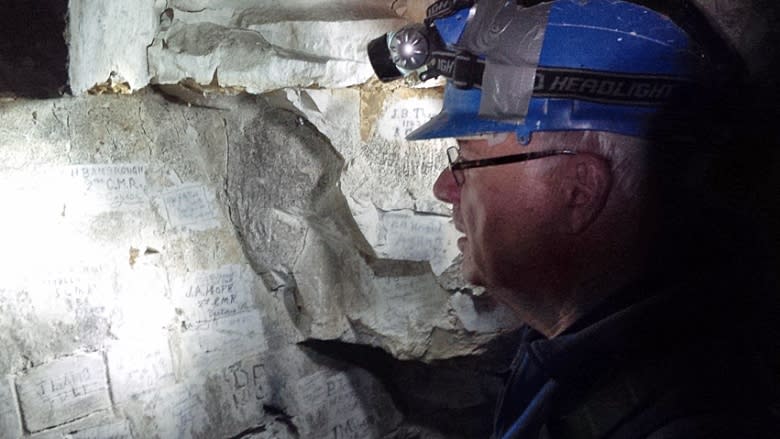Why I remember on Nov. 11: Peter Mansbridge
It was an etching of a fish that first caught my eye.
It had been pencilled into the walls of a tunnel eight metres deep, in Vimy Ridge in the Nord-Pas-de-Calais region of France, drawn there by a Canadian soldier, quite possibly on the night before he and thousands like him stormed out of the tunnels, attacked the German stronghold and, for some historians, turned the course of the war.
Legend would call it one of Canada's finest hours, perhaps, say some, the moment we became a country. It was April 1917.
I spent an afternoon in that tunnel this summer, the first journalist to be allowed in to what, until recently, had been undiscovered and undisturbed for almost a century
Not far from Vimy's much better known and heavily visited trenches and tunnels, this remarkable piece of Canadian history — a 1.2-kilometre-long tunnel called the Goodman subway — is only accessed these days by a team of underground specialists from England.
So I felt very special to be asked to join one of their visits. And what I saw made me feel very Canadian. Perhaps more Canadian than I have ever felt.
There on those chalk tunnel walls, young Canadian boys in their teens and early twenties had scribbled their names, then their regiments and, in some cases, fashioned drawings and carvings that, to them, reflected Canada in a very personal way.
The fish was from a young man from Nova Scotia; There was a canoe from a soldier in Ontario, a wheat field from a Winnipeg lad, a maple leaf from Quebec, a face carving from British Columbia.
Thousands of Canadians would die in the hours and days immediately following the assault — how many of these etchings were the last words these fellows ever wrote, the last images they ever drew?
Canada's sacrifices
In those damp, dingy tunnels, illuminated by the light of my miner's helmet, I couldn't look at these images without thinking of those last hours.
Because of my job and the opportunities it gives me to travel the country and the world, I often find myself in places that make me feel very Canadian.
Sailing through the Northwest Passage, seeing the Northern Lights, flying over and driving through the Rockies, being inside the Parliament buildings, walking the boardwalk overlooking the St. Lawrence in Quebec City, standing at Cape Spear, N.L. The list is endless.
But there is also something incredibly poignant and emotional about places from our military past.
I've been on Hong Kong Island where Canadian troops were outnumbered, outgunned, and lost the day while bravely standing their ground against Japanese forces as long as they could during Christmas 1941.
- Listen to The Current: The Battle of Hong Kong
I've stumbled across the rocky beach at Dieppe where Canadians were led into a brutal slaughter in 1942.
I've also been to Ypres where thousands of our troops lost their lives in the first gas attack of "the Great War;" to Passchendaele knowing how many hundreds died every day for gains of a few metres; and to the beaches of Normandy where in little towns like St. Aubin sur Mer, you can still imagine, even 70 years later, how blood-soaked the sands were, as hundreds of Canadians were cut down seconds after jumping off their landing craft.
All those moments from our past, plus covering the modern day wars from the Gulf to Afghanistan, they've all affected me deeply.
It's for all those people — the fallen, the wounded and those who served their country and survived — that we remember, as we should.
As I anchor our annual Remembrance Day coverage this year, I will think of them all.
But there will be a special corner of my being that will visualize the etched fish on the underground walls of Vimy Ridge. What was going through that young man's mind that night? Did he survive? Did he live to fish again?
This Nov. 11 will be a service at the National War Memorial unlike any other.
Everyone there, and I won't be surprised if there will be a larger turnout than ever before, will be thinking not only of our distant past, but of what happened at this very memorial just three weeks ago.
It is ground more hallowed now. And we won't forget. Any of it.
Watch Canada's soldier, hosted by CBC News chief correspondent Peter Mansbridge, a CBC News documentary special, tonight at 8 p.m. on CBC-TV. In this one-hour documentary special for Remembrance Day, Mansbridge retraces the steps that Canadians took as they were dispatched to fight in The Great War. Even after 100 years, many memories from the First World War remain cloaked in mystery, including a tunnel with Canadian artifacts never seen before on television.




